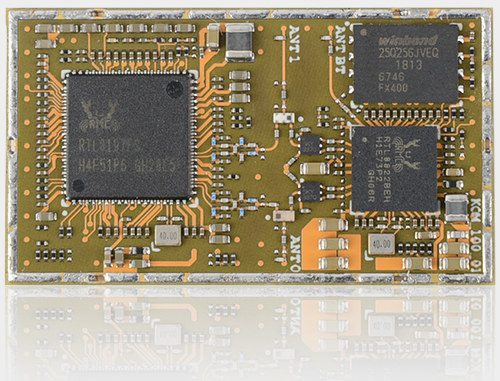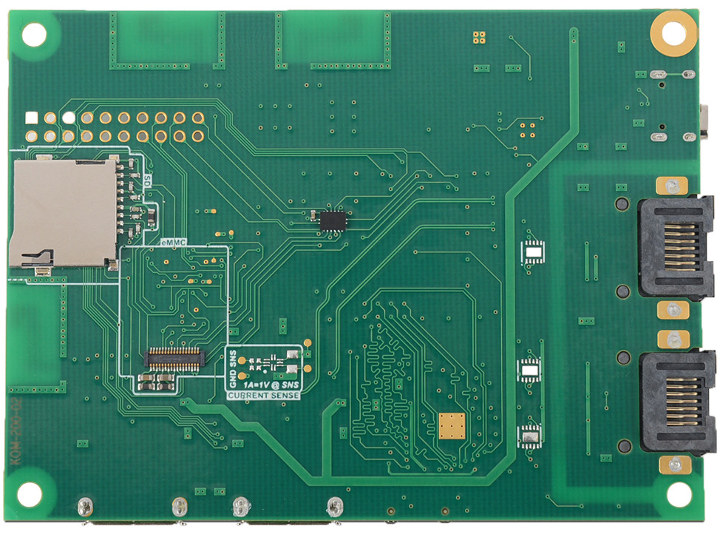8devices has been developping and selling WiFi modules such as their Rambutan Atheros module, and the now-discontinued Carambola module. The company is now back with Komikan, an 802.11ac Wave 2 + Bluetooth 4.1 module, as well as the corresponding Komikan development kit.
Komikan 802.11ac Wave 2 Module
- CPU – Realtek RTL8197FS MIPS 24Kc processor @ 1 GHz
- System Memory – 128 MB RAM
- Storage – 32MB flash
- Connectivity
- WiFi 4 802.11 b/g/n 2×2 MIMO via RTL8197FS
- WiFi 5 802.11ac Wave 2 2×2 MIMO via Realtek RTL8822BEH
- Bluetooth v2.1/3.0/4.1
- Max output power – 22 dBm per chain
- Antenna – GPIO pins for external antenna
- Expansion via bottom pads – 44x GPIO, 2x USB, 4x UART (one for BT), RGMII, 2x SPI, PWM, MDIO, eMMC, JTAG, 2x I2S, PCM, 2x I2C, P-NAND
- Power supply – 3.3V, max power consumption 6W
- Dimensions – 37.5 x 21.3 mm
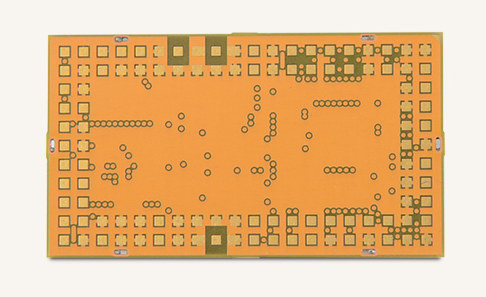 The two integrated radios (2.4 and 5GHz) can achieve up to 1.166Gbps data rates, the module runs OpenWrt, and according to the company, Komikan consumes very little power, and does not require a heatsink like competing 802.11ac Wave2 modules
The two integrated radios (2.4 and 5GHz) can achieve up to 1.166Gbps data rates, the module runs OpenWrt, and according to the company, Komikan consumes very little power, and does not require a heatsink like competing 802.11ac Wave2 modules
Komikan Development Kit
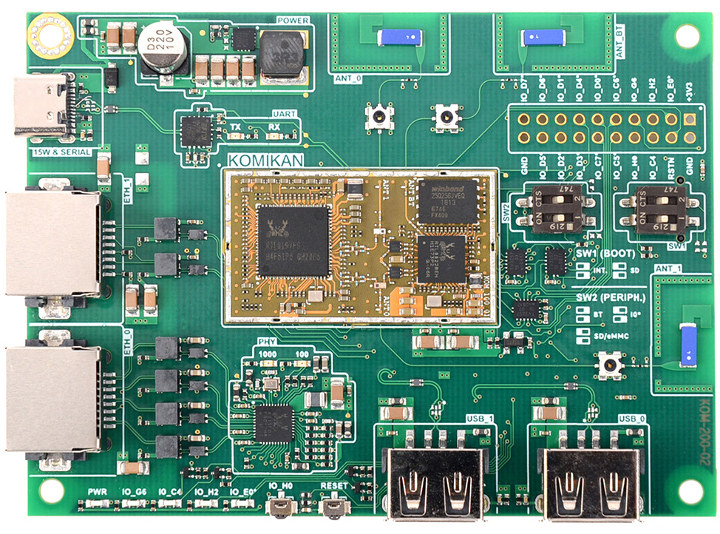
Development board specifications:
- Wireless Module – 8devices Komikan soldered on board
- Storage (bottom of board) – microSD card slot, eMMC flash module socket
- Connectivity
- 1x Gigabit Ethernet, 1x 10/100M Fast Ethernet
- WiFi + Bluetooth on Komikan module
- 2x PCB+chip antennas and u.FL connectors for WiFi
- 1x PCB+chip antenna and u.FL connector for Bluetooth
- USB – 2x USB 2.0 host ports, 1x USB type–C for power supply and UART console
- Expansion – 20-pin GPIO header
- Misc – Reset and user buttons, Dip switches for bootstrap and peripheral selection), current sensor
- Power Supply – 5V via USB-C port
- Dimensions – TBD
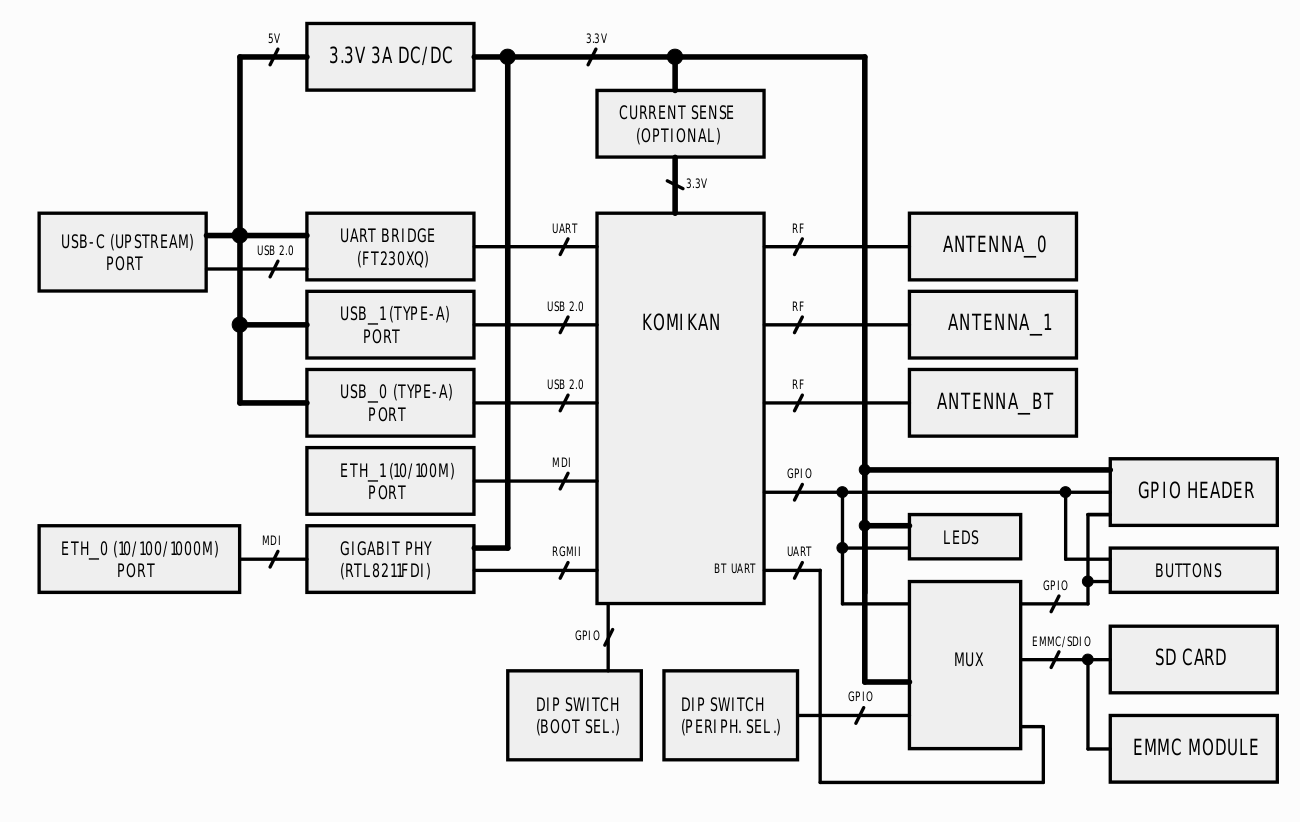
8devices will normally provide OpenWrt source code on Github, and documentation in their Wiki, but so far I don’t see anything related to their Komikan module and development board. It’s probably only a matter of time before those get updated.
You’ll find more details in the product page including the schematics (PDF), bill-of-materials (BoM), and datasheet. The Komikan module can be pre-ordered for $29, and the development kit for $59 with both scheduled for ship on May 15. Discounts are available for quantities over 5 units.

Jean-Luc started CNX Software in 2010 as a part-time endeavor, before quitting his job as a software engineering manager, and starting to write daily news, and reviews full time later in 2011.
Support CNX Software! Donate via cryptocurrencies, become a Patron on Patreon, or purchase goods on Amazon or Aliexpress


